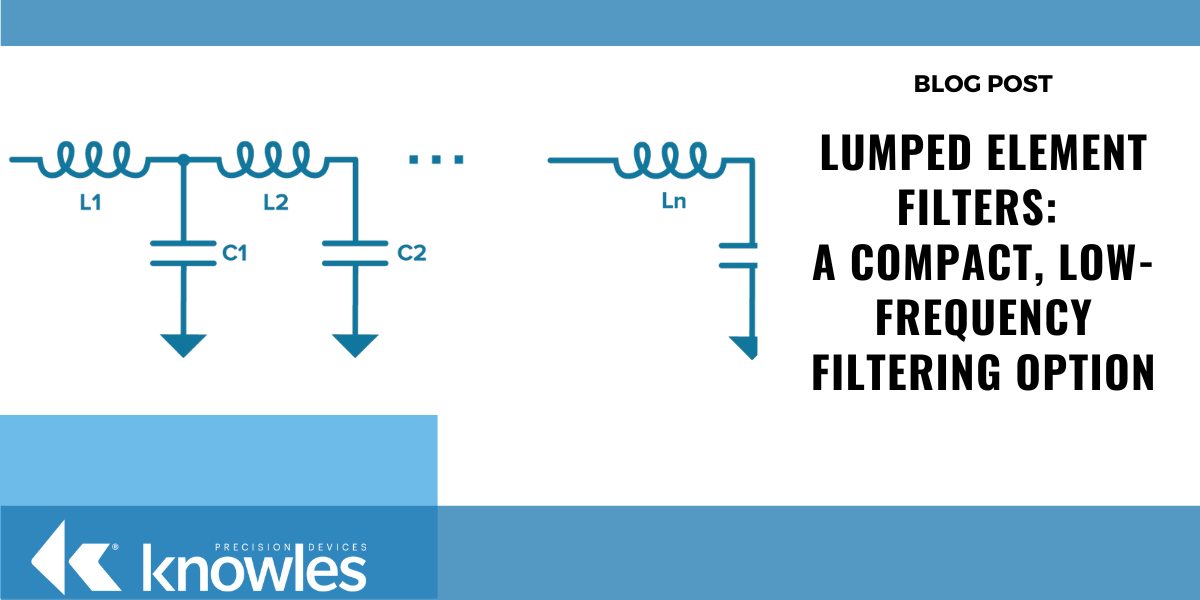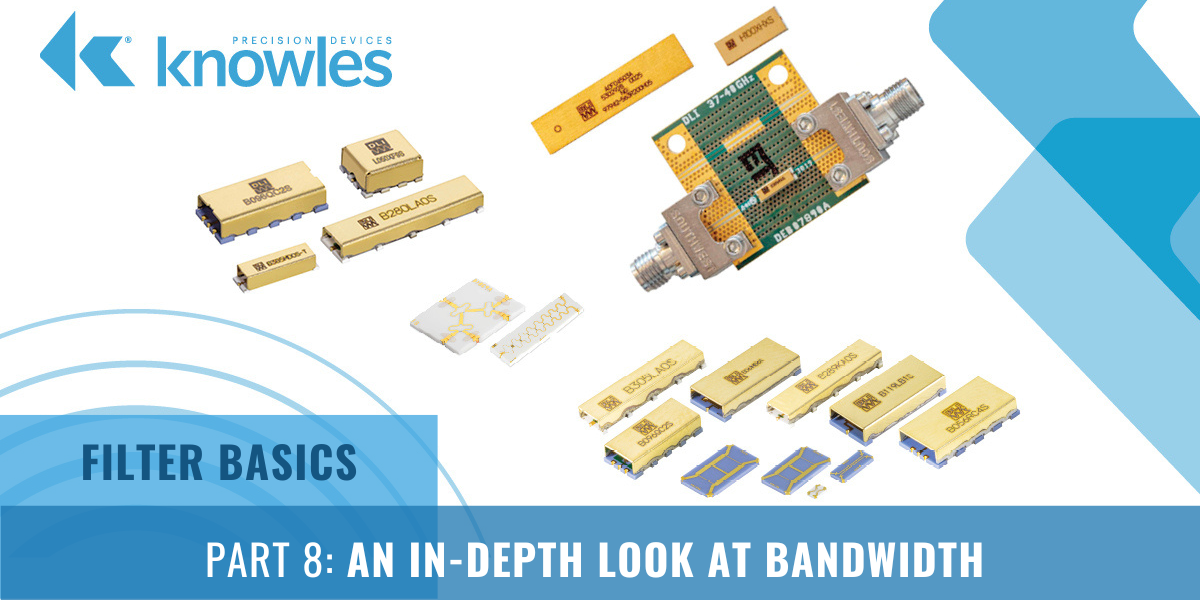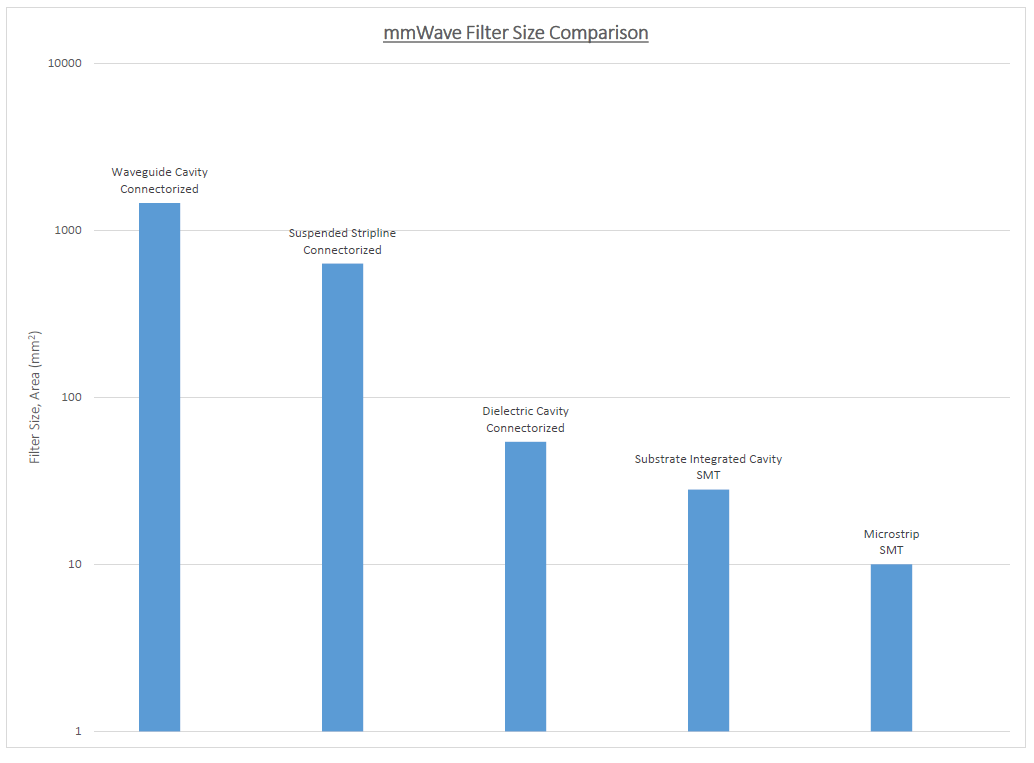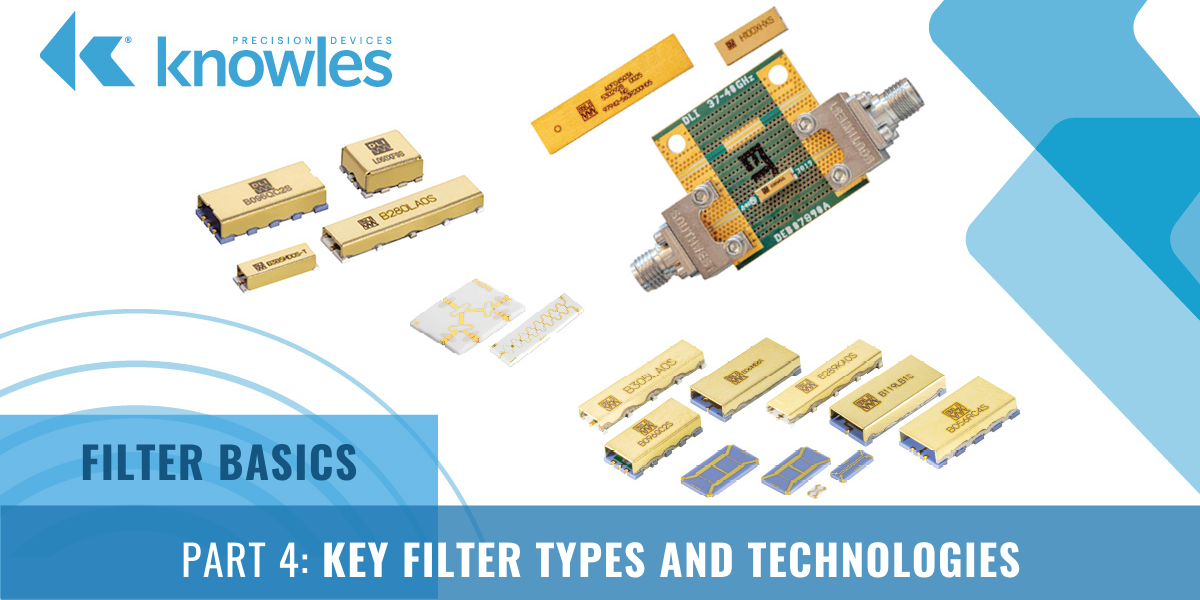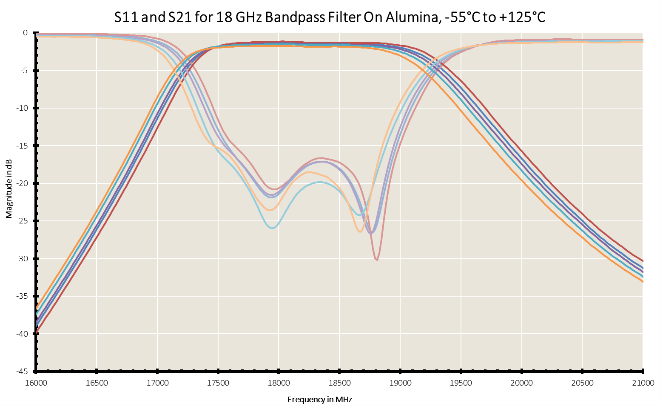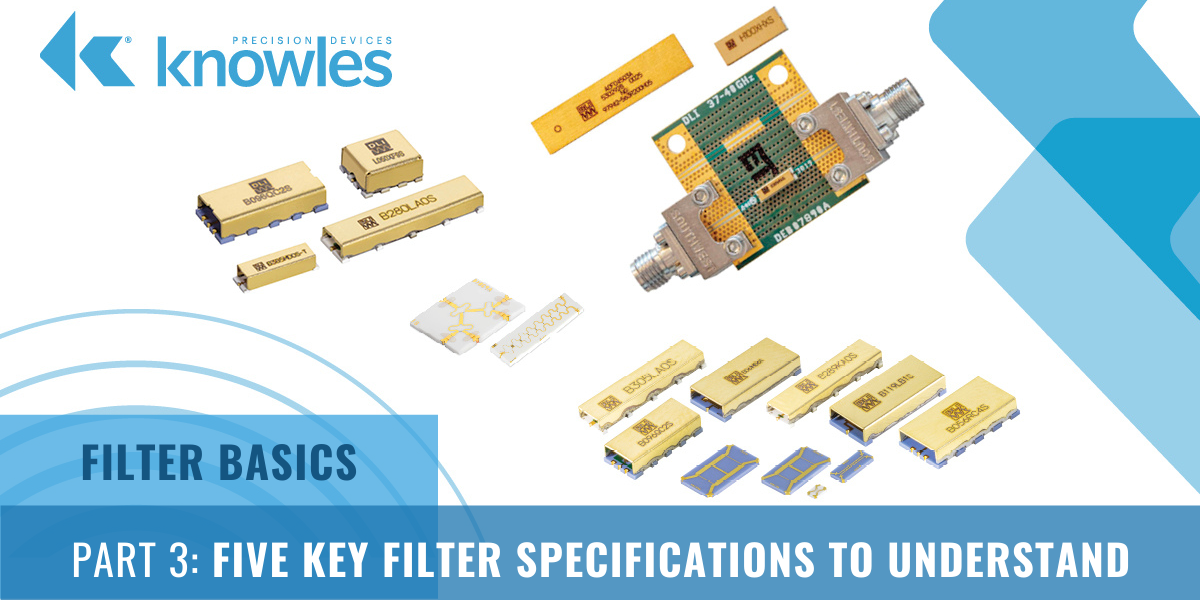If you are looking for general microwave product information and best practices for information about devices contained Knowles DLI brand microwave products, including both our catalog commercial-off-the-shelf (COTS) parts and custom-designed part numbers, then our new Microwave Products Guide is for you!
The Microwave Products Guide: Everything You need to Know About Using DLI Brand Microwave Products
Topics: RF and Microwave
Lumped Element Filters: A Compact, Low-Frequency Filtering Option
At Knowles Precision Devices, we are well known for our expertise delivering high-performance mmWave filtering options. But did you know we also excel at providing a wide variety of lower frequency filtering options using a lumped element filter construction? In this blog post, we explore the basics of lumped element filter design, general lumped element filter characteristics, and how we can push lumped element filter design limits to develop a wide variety of high-performance low-frequency filtering options.
Topics: RF and Microwave, Filtering
Practical Innovation at Knowles Precision Devices
Innovating essential high technology systems with demanding specifications is always challenging; making any sort of difference requires extensive resources and deep subject matter knowledge.
But that’s what keeps it interesting.
Topics: 5G, Capacitor, News and Events, RF and Microwave, Automotive, Military and Aerospace, Medical
To help customers with filter selection, we generally provide a lot of information on what our filters can do. But in this new Filter Basics Series, we are taking a step back to cover some background information on how filters do what they do. Regardless of the technology behind the filter, there are several key concepts that all filters share that we will dive into throughout this series. By providing this detailed fundamental filter information, we hope to help you simplify your future filtering decisions.
In part 8 of this series, we dive deeper into bandwidth by looking at the history of bandwidth, how bandwidth dictates data rate, and why the type of filter required will vary depending on an application’s bandwidth requirements.
Topics: RF and Microwave, Filtering
Microstrip Filters Deliver Small Size at High Frequencies
When selecting a filter implementation, one factor that is common across all frequencies is optimizing the size of the filter given the application and the required performance. At mmWave frequencies this can be prove to be a particularly interesting problem, given the change in the physical dimensions of the system as one moves from say 600MHz to 38GHz.
Topics: RF and Microwave
Filter Basics Part 4: Key Filter Types and Technologies
To help customers with filter selection, we generally provide a lot of information on what our filters can do. But in this new Filter Basics Series, we are taking a step back to cover some background information on how filters do what they do. Regardless of the technology behind the filter, there are several key concepts that all filters share that we will dive into throughout this series. By providing this detailed fundamental filter information, we hope to help you simplify your future filtering decisions.
In part 4 of this series, we provide overviews of the main filter types and key filter technologies available today.
Topics: RF and Microwave, Filtering
PCB Design Considerations for High-Performance Filtering in mmWave Applications
RF circuits for applications in the mmWave range (30 to 300 GHz) require high-performance filtering to meet the high-data, high-speed functionality that operating at these higher frequencies promises. However, filters for devices operating in the mmWave range will not function optimally if your printed circuit board (PCB) is not configured appropriately. For this reason, RF design engineers need to make a number of critical PCB design decisions that range from selecting the right materials to developing a board configuration that will limit common issues such as spurious-wave-mode propagation, conductor and radiation losses, unwanted resonance, and dispersion.
Topics: 5G, RF and Microwave, Filtering
Spectral Efficiency and mmWave Bandpass Filter Temperature Stability
Spectral efficiency, or bandwidth efficiency, tells us about the channel capacity over a 1Hz bandwidth. It is a measure of the efficiency of a physical layer protocol when it comes to utilizing the spectrum available. To understand how spectral efficiency is calculated, it’s first important to understand the Shannon-Hartley Theorem in the context of 5G mmWave applications (which we discussed in an earlier blog post).
Topics: 5G, RF and Microwave
Filter Basics Part 3: Five Key Filter Specifications to Understand
To help customers with filter selection, we generally provide a lot of information on what our filters can do. But in this new Filter Basics Series, we are taking a step back to cover some background information on how filters do what they do. Regardless of the technology behind the filter, there are several key concepts that all filters share that we will dive into throughout this series. By providing this detailed fundamental filter information, we hope to help you simplify your future filtering decisions.
In part 3 of this series, we aim to help simplify filter selection by providing an overview and reference point for five of the most commonly discussed filter technology specifications.
Topics: RF and Microwave
Striking a Balance for Spectrum Needs: 5G Communications vs. Aircraft Altimeter Operations
At this point, you’ve likely seen a slew of mainstream news articles about 5G causing safety concerns around air travel. In fact, ahead of the rollout of new 5G services from major US telecom companies including Verizon and AT&T on Jan. 19, 2022, many international airlines canceled or delayed flights to major US airports where they believed 5G signals could possibly interfere with the radar signals required to properly operate landing equipment on their planes.
Topics: RF and Microwave, Military and Aerospace, Filtering


